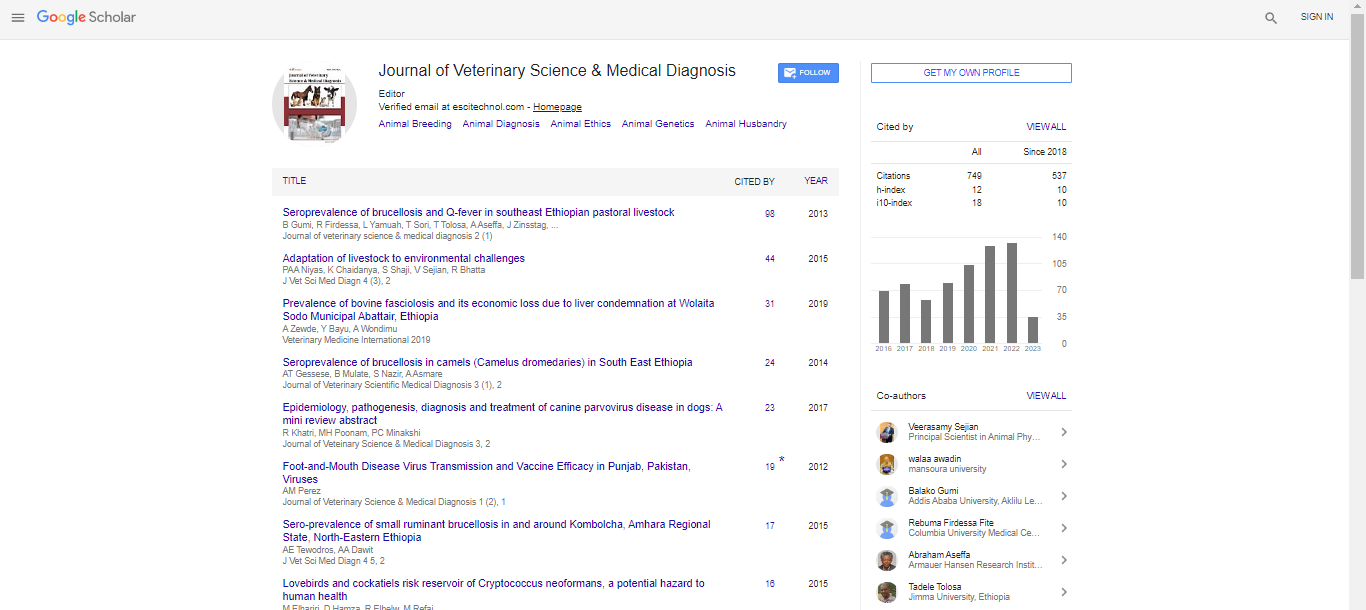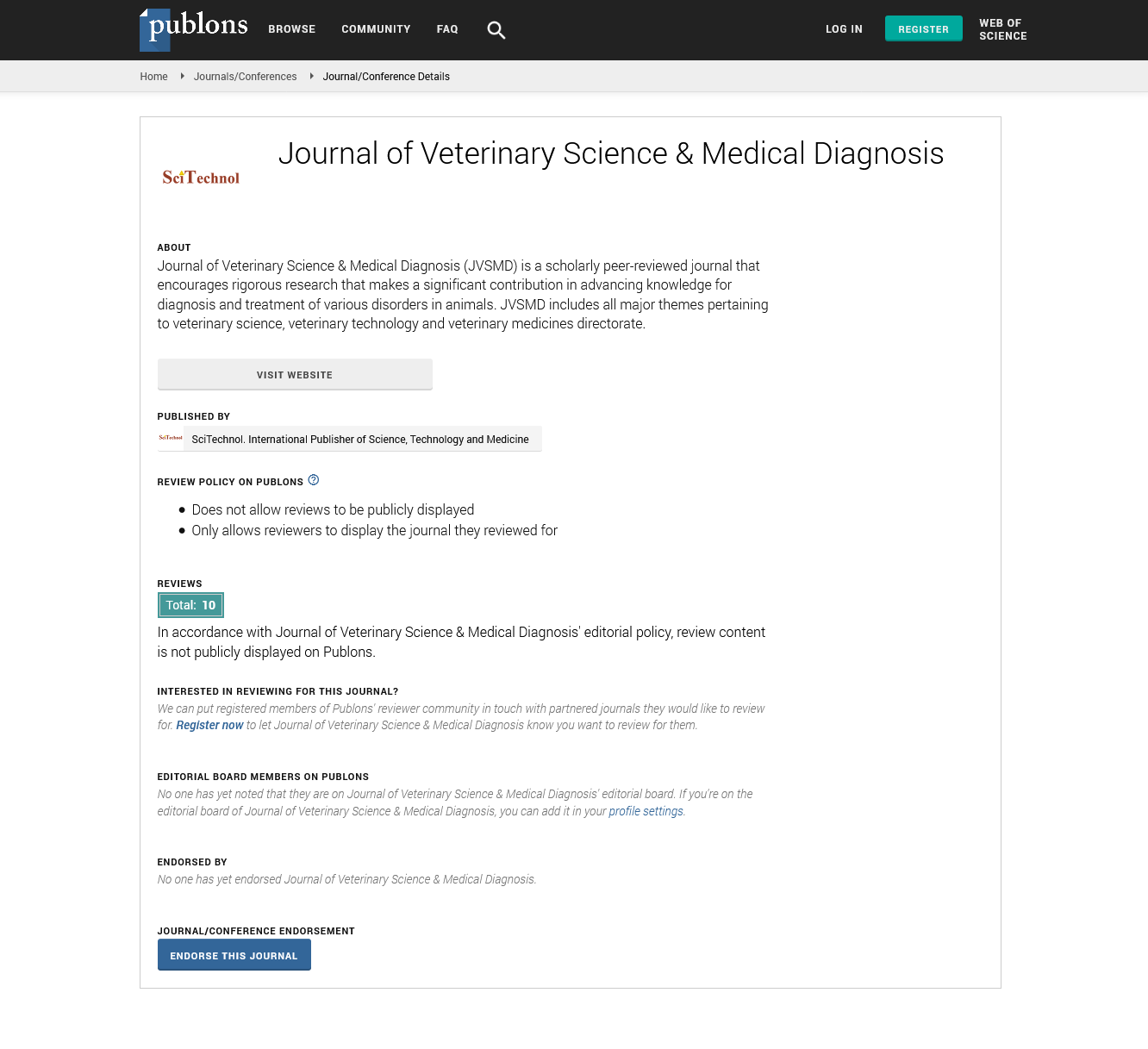Development of a chlamydial vaccine for koalas: Protection against infection as well as disease
Peter Timms
University of the Sunshine Coast, Australia
: J Vet Sci Med Diagn
Abstract
Wild koala populations continue to experience serious declines as a result of several threatening factors including: (i) loss of habitat; (ii) motor vehicle trauma; (iii) dog attacks; and (iv) chlamydial disease. Chlamydial infections are associated with diseases ranging from ocular disease leading to blindness, as well as urinary and genital tract disease, leading to female infertility. Modeling shows that targeting chlamydial disease would have a major impact on stabilizing population decline. Our previous studies have demonstrated that koalas can be safely immunized with a vaccine containing a mixture of chlamydial major outer membrane protein (MOMP) antigens combined with a single or three-dose subcutaneous regime. In our most recent, large scale, field trial of the vaccine, we vaccinated 30 koalas that were outwardly clinically healthy but either Chlamydia PCR negative or Chlamydia PCR positive, and followed them for 1-2 years to assess the protective effect of the vaccine (compared to a control group of unvaccinated koalas). We observed strong, specific and long-lasting immune responses in the vaccinated koalas; high titer antibody responses (as measured by ELISA and also in vitro neutralization) as well as Chlamydia-specific cytokine responses (interferon-gamma and IL-17 in particular). For animals which were Chlamydia PCR positive at the time of vaccination, we observed a significant reduction in their infection PCR load (at both the ocular and urogenital tract sites). We also observed protection from progression to clinical disease in the vaccinated animals. We have also conducted a small trial to vaccinate animals which already have clinical signs of ocular disease. Instead of the normal practice of administering antibiotics (chloramphenicol, daily for 28 days, which severely disrupts the animal’s gut microbiome) we vaccinated four animals with a single dose and 3-MOMP vaccine. For all vaccinated animals, their Chlamydia PCR load decreased, often to zero and in two animals at least, we observed a decrease in their clinical disease score. These results are promising for the future development of an effective chlamydial vaccine for use in captive as well as wild koalas.
Biography
Peter Timms is a Professor of Microbiology at the University of Sunshine Coast in Queensland, Australia. He is a nationally and internationally renowned Microbiologist with specific expertise in the area of Chlamydia. His laboratory is acknowledged as the leading Australian Laboratory and one of the leading groups internationally working on all aspects of chlamydial infections. He leads a well established research team of 16 people, based at QUT’s Institute of Health & Biomedical Innovation until January 2014 when he moved his group and laboratory to the University of the Sunshine Coast. His research group of 12 staff and students is developing vaccines and new diagnostics for chlamydial diseases in humans and animals as well as an improved understanding of Chlamydial Genomics, Cell Biology and Pathogenicity. He has published over 200 papers, reviews and book chapters in peer-reviewed international scientific journals such as, Infection & Immunity, Molecular Microbiology, Journal of Clinical Microbiology, Journal of Bacteriology, PLoS Pathogens, Journal of Infectious Diseases and Trends in Microbiology and Bioinformatics.
Email: ptimms@usc.edu.au
 Spanish
Spanish  Chinese
Chinese  Russian
Russian  German
German  French
French  Japanese
Japanese  Portuguese
Portuguese  Hindi
Hindi 
